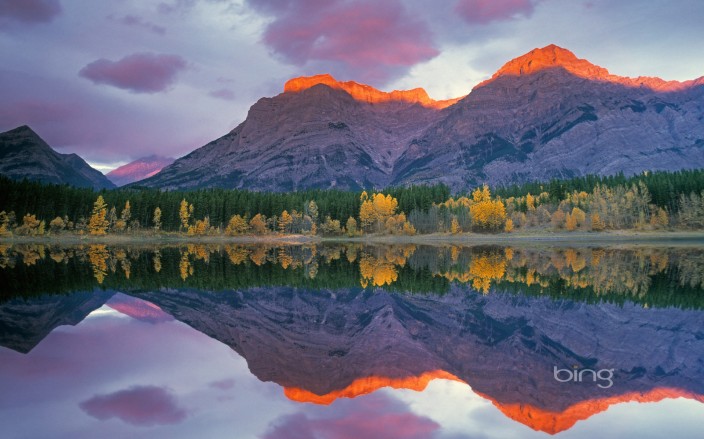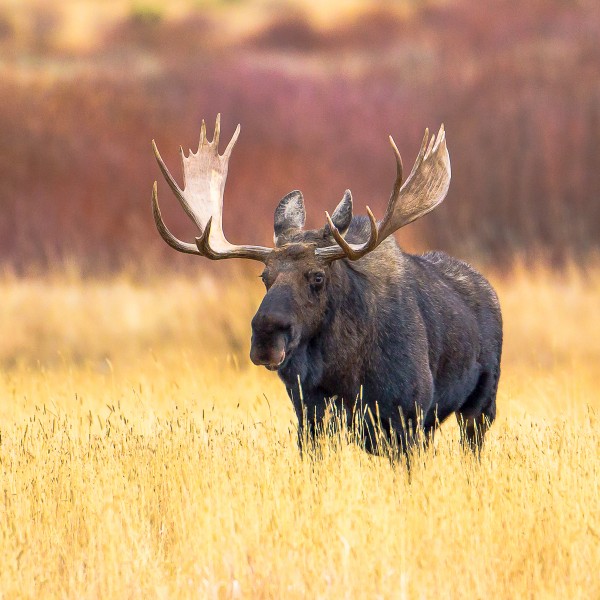There is something about working in two different countries on the same trip that makes it feel like you have been away from home longer than you actually have. This last shoot consisted of three weeks in Canada followed by a week in Alaska, and it is very nice to home. Although the joys of jet-lag mean I am writing this, wide awake, at 3am.
 The first part of the trip was for Survival, a major BBC1 series about animal behaviour, and we were in the Canadian Rockies filming Pikas. These are absolutely brilliant creatures, about the size of a hamster and related to rabbits. They live on scree slopes and their party piece is that they gather plant material throughout the summer and autumn which they store in piles – slowly drying it as the season progresses – so that by the time winter arrives they have enough food to last them through. Pikas don’t hibernate so it is a matter of life or death as to whether they manage to store enough food in their hay piles to survive the long alpine winter.
The first part of the trip was for Survival, a major BBC1 series about animal behaviour, and we were in the Canadian Rockies filming Pikas. These are absolutely brilliant creatures, about the size of a hamster and related to rabbits. They live on scree slopes and their party piece is that they gather plant material throughout the summer and autumn which they store in piles – slowly drying it as the season progresses – so that by the time winter arrives they have enough food to last them through. Pikas don’t hibernate so it is a matter of life or death as to whether they manage to store enough food in their hay piles to survive the long alpine winter.
You really get the sense that the pressure is on as they repeatedly charge between the meadows at the fringe of the scree and their own patch of rocks and boulders, mouths full with vegetation, pausing only to scream their characteristic ”Eeek!’. They have several hay piles which they tend in a very systematic way, layering different types of vegetation to help the drying process and adding flowers and seed-heads which are known to release preservative compounds.
They were really fantastic creatures to observe, I can’t think of an animal that has made me smile more while filming. They can become very habituated and the individual I was focusing on came and and sat on my lap and stuck his nose in the icing of my cinnamon roll one afternoon.
They did present their own set of challenges, not least the fact that they have two speeds: zero and 200mph, and normal rules of Newtonian physics don’t seem to apply. They can (and do) stop dead from a full-on sprint, turn on a sixpence, and never really seem to follow the same path twice. So getting close up shots of them running through their territories was pretty challenging. If you did occasionally manage to follow focus with one for a few seconds the resulting slow motion image showed that, what to the naked eye might look like an animal flawlessly speeding through it’s world, was actually a comedy of skids, slips, various degrees of wheel spin and the occasional wipe-out. This was especially true when they were returning to their haypiles with a mouth full of plants. Of course, this made them all the more endearing.
The scenery was absolutely stunning, there were bears, bighorn sheep, daily visits by guided-missle goshawks and we had wall to wall sunshine for most of the trip, it was a shame to move on.
The second part of the shoot took me back to the very familiar territory of Anchorage, Alaska, to film the moose rut. This is for a 3-part BBC series on Alaska which I’ll be working on for much of the next year. It’s strange to think that it’s over 10 years since I first filmed in Anchorage, and I’ve been back so many times since that I probably know my way around town better than any other city on earth. I was working with my old friend Rick Sinnott, who used to be the Alaska Fish & Game area biologist for Anchorage. There is nobody I’d rather have on hand to help in the slightly iffy process of finding and filming testosterone addled moose – even if I have a heart attack trying to keep up with him in the mountains.
We got in amongst some good moose, but the rut was only just warming up so the behaviour was fairly low key, I’m back next week so things should be boiling over nicely into characteristic moose chaos by then.

